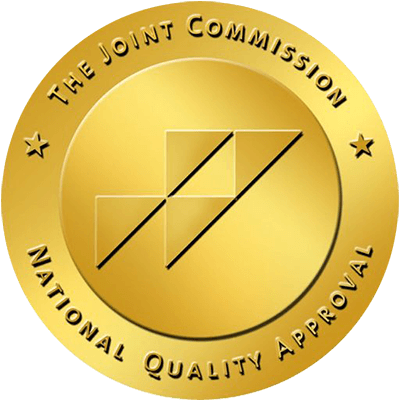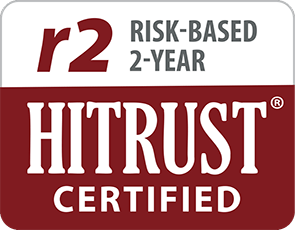Written by Ashley Kane,
Brightside Health
6 Minute Read

Medically reviewed by:
Erin O'Callaghan, PHD
Director of Therapy
10 Minute Read

*This article mentions topics related to sexual violence.
Experiencing a stressful or traumatic event can have a severe impact on your life. While some people are able to cope with the aftermath until hard times pass, some individuals may experience lasting stress and discomfort.
Acute stress disorder is an anxiety disorder marked by intense episodes of emotional distress within a month following a traumatic event, and it can be precursor to post-traumatic stress disorder (PTSD).
Let’s talk about everything you need to know.
What Is Acute Stress Disorder?
Following an accident, injury, or other traumatic event, an individual may become inundated with recurring traumatic thoughts and intense emotions about the event. Individuals may be unable to experience positive emotions or go about their daily life without thinking about the event. If these feelings last up to a month, it may be considered an acute stress disorder.
Causes of Acute Stress Disorder
Things like experiencing an act of sexual violence, losing a loved one, or witnessing a crime are all examples of stressful life events that might act as catalysts.
Diagnosis
Acute stress disorder can only be diagnosed by a psychiatric provider, licensed therapist, or medical provider.
To be diagnosed, a person must have been exposed to a traumatic or life-threatening event, and must exhibit a number of symptoms for at least three days but no longer than a month.
Most people are able to cope with a stressful event with time. However, if the symptoms last for longer than a month, it is possible to receive a diagnosis of PTSD, or post-traumatic stress disorder.
This bears many of the same symptoms as acute stress disorder, though it persists longer and may not present itself for months or even years after the event takes place.
Symptoms
The symptoms of acute stress disorder can look different for everyone, though there are a few that are most common:
- Recurring and distressing memories of the event
- Flashbacks of the event
- Persistent inability to experience positive emotions
- Physical or psychological distress when reminded of the event
- Intense efforts to avoid distress thoughts or locations associated with the event
- Disturbed sleep
- Irritability
- Hypervigilance, or excessive attention to the possibility of danger
- Difficulty focusing
- Exaggerated response to loud noises or sudden movements
The symptoms must cause significant distress or must significantly impair day-to-day functioning to qualify a diagnosis.
People at Risk
Some people may develop acute stress disorder without first immediately experiencing a traumatic event.
You may be at an increased risk of developing one if you have:
- Experienced a traumatic event in the past
- A co-occurring mental illness, such as depression or anxiety
- A history of dissociative symptoms during traumatic events
- Substance use issues or a history of alcoholism
Treatment Options
Many people are able to recover from acute stress disorder once they are removed from the stressful situation and given proper support from family as well as time to process.
However, the severity of the event can influence someone’s ability to properly cope with the emotional aftermath.
Some people, especially those with co-occurring mental illness or a history of traumatic events, may benefit from talk therapy or cognitive behavioral therapy with a professional therapist.
One particularly effective technique known as prolonged exposure can allow those with acute stress to become gently exposed to their traumatic memories in order to learn how to cope with them more effectively.
Additionally, medications can be prescribed to help with symptoms of depression and anxiety that are often associated with acute stress. SSRI medications such as sertraline (Zoloft) and paroxetine (Paxil) are most commonly prescribed, especially for PTSD.
Coping Methods That Can Help
It’s impossible to prevent a traumatic event from occurring, but there are some things that can be done to reduce the risk of developing an acute stress or post-traumatic stress disorder.
- Surrounding yourself with a strong support system of family and friends can give you an outlet to express your feelings as well as a way to get your mind off of the stressful event, even if just temporarily. It may also be helpful to join a support group for acute stress disorder or PTSD so you can share your experiences among people who understand what it’s like.
- Additionally, mindfulness techniques can help you put your mind at ease and put you back into the present moment. You can practice mindfulness with yoga, meditation, going on a walk, taking time for self care, reading a book, or doing any activity that allows you to feel at peace with yourself. This can be especially helpful if you are ever in a situation that reminds you of the traumatic event
- Finally, allow yourself to feel and experience your emotions in the aftermath of the event. Experiencing your emotions is important because it is a normal part of the grieving, bereavement, and healing process — trying to deny your emotions may put you in a more difficult place later. Not to mention, it lets you feel heard, which can help bring a sense of closure and finality to the event causing the stress.
In Summary
Acute stress disorder is an anxiety disorder marked by temporary feelings of emotional distress after a traumatic event. It’s a precursor to post-traumatic stress disorder that bears many of the same symptoms, however, it typically doesn’t last for longer than a month.
Many people experience some form of acute stress after witnessing or experiencing something stressful. While most are able to cope with time, some people may develop more severe reactions that have negative impacts on daily life.
If you’re having trouble coping with the stress of a traumatic event on your own, Brightside can help. Our science-backed approaches combined with prescription medication right to your door can get you back on your feet from the comfort of home.
To learn more about how Brightside can help, click here.
Sources:
Post-traumatic stress disorder (PTSD) – Symptoms and causes | The Mayo Clinic
What Are Dissociative Disorders? | American Psychiatric Association
Prolonged Exposure (PE) | American Psychological Association
Experiencing and Expressing Emotion | University of Illinois Counseling Center













